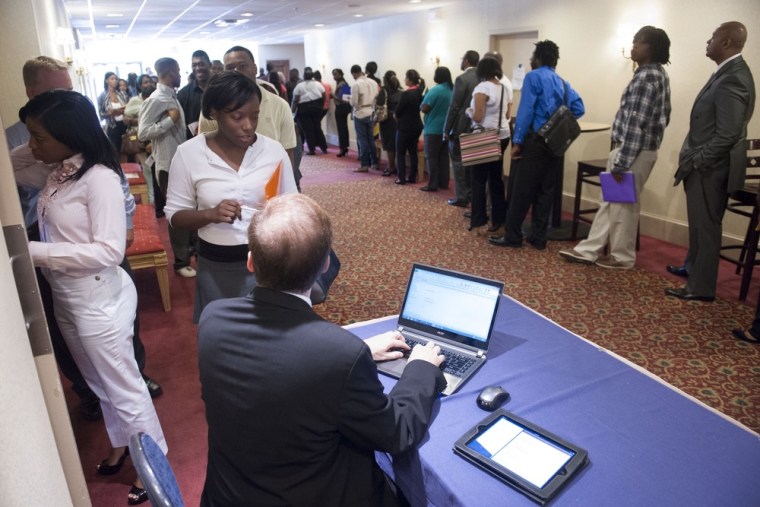The number of Americans filing new claims for unemployment benefits fell slightly last week, in line with the recent moderate pace of jobs growth. Meanwhile, the Commerce Department said consumer spending increased 0.3 percent last month, after a revised 0.3 percent drop in April.
Consumer spending in April was previously reported to have declined 0.2 percent.
Initial claims for state unemployment benefits dropped 9,000 to a seasonally adjusted 346,000, the Labor Department said on Thursday. Claims for the previous week were revised to show 1,000 more applications than previously reported.
Economists polled by Reuters had expected first-time applications to fall to 345,000 last week.
The four-week moving average for new claims, which irons out week-to-week volatility, fell 2,750 to 345,750.
A Labor Department analyst said no states had been estimated and there were no special factors in the state data.
Employers added 175,000 new jobs to their payrolls last month, with the unemployment rate ticking up a tenth of a percentage point to 7.6 percent. Job gains have averaged 172,000 over the last 12 months.
The Federal Reserve, which has been closely monitoring the labor market, said after its policy-setting meeting last week downside risks to the outlook for the jobs market had diminished since the fall.
Fed Chairman Ben Bernanke said the central bank could trim the $85 billion in bonds it has been buying each month to keep interest rates low and bolster the economy sometime later this year and likely bring the program to a close by mid-2014.
The claims report showed the number of people still receiving benefits under regular state programs after an initial week of aid fell 1,000 to 2.965 million in the week ended June 15.
U.S. consumer spending rebounded and incomes recorded their largest increase in three months in May, adding to data that have suggested the economy has shifted to firmer ground.
Last month's consumer spending increase was in line with economists' expectations. When adjusted for inflation, consumer spending rose 0.2 percent last month after dipping 0.1 percent in April.
Consumer spending accounts for 70 percent of U.S. economic activity. Though the pace of spending has slowed from the 2.6 percent rate notched in the first three months of the year, consumers will likely continue to drive growth in the second quarter.
Recent data, including housing, regional factory activity, business spending plans and consumer confidence, have pointed to an economy that is regaining some speed after stumbling early in the second quarter.
That is broadly supportive of the Fed's view last week that the downside risks to the economy's outlook have waned.
That theme held as other details of the Commerce Department report showed income grew 0.5 percent last month, the largest gain since February, after nudging up 0.1 percent in April. That reflects a steady pace of job gains.
There was also a bit of inflation in the economy last month, pointing to some pick-up in demand.
A price index for consumer spending inched up 0.1 percent in May after declining two straight months. A core reading that strips out food and energy costs also rose 0.1 percent after being flat in April.
Over the past 12 months, inflation rose 1 percent, still below the Fed's 2 percent target. The index had increased only 0.7 percent in the period through April.
Core prices were up 1.1 percent from a year ago after rising by the same margin in April.
